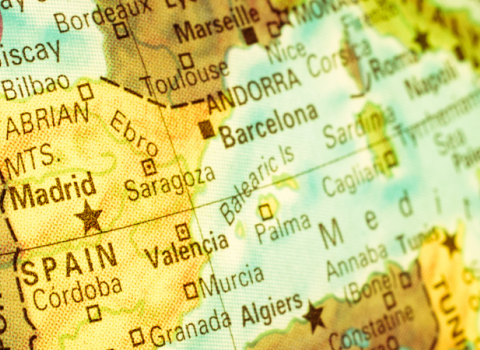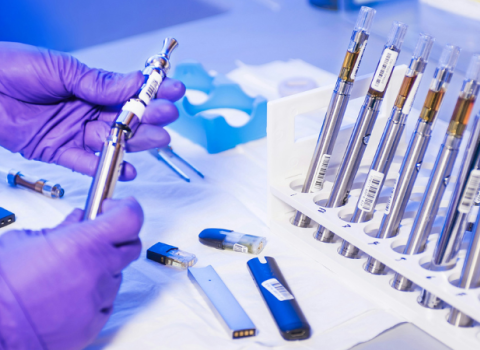
The biotech sector in Italy may be one of the youngest in Europe, but it has a role call of 145 companies, of which more than 45 have formed since 2000. In total 8,500 people are employed in the industry which has turnover of €2.9 billion a year.
“Despite this, the sector is still relatively unknown,” says Giampaolo Russo, Head of Inward Investment at Invest in Italy. Russo was aiming to put this right, presenting Italy’s biotech attractions to delegates at BIO 2006 in Chicago, earlier this month.
He was not the only one to be promoting national interests: countries from across Europe, Asia and South America were displaying their bioscience wares at the conference, along with a host of US states.
In its particular niches of neuroscience and oncology Italy has 21 drugs in clinical trials, placing it at number 3 in Europe behind the UK and Switzerland in these fields.
This argues Russo, “is a high number in relation to the number of companies in Italy”, adding, “Recently the underlying strength of the sector has been demonstrated by deals between Merck and BioXell for TREM receptors [check] and Cephalon and Creabilis for K252 [a psoriasis treatment].”
In addition, the venture capitalist firm TVM has invested in two Italian companies, Newron and BioXcell. “When we talk about Italy’s image as a centre for biotech, this is a clear example of how things are changing,” said Russo. “TVM had never looked at Italy before 2005. Indeed, at the end of 2004 they put Italy on the blacklist because of its lack of profile.”
“But in March 2005 they started scouting – and told us they found an amazing reality. The quality of research impressed them and they closed two deals in six months.”
Attracting attention
Italian bioscience has attracted the attention of overseas companies also. Russo claims one of the reasons Novartis was keen to take over Chiron was because, “They were strongly attracted by the [Chiron] vaccines plant in Siena.” Other examples are Bristol Myers Squibb, which recently invested €123 million in the Nerviano Medical Sciences Centre; Sanofi-Aventis investing €200 million in preclinical research in a centre in Milan; and Berna Biotech building a €55 million GMP vaccines manufacturing facility in Catania, Sicily.
This inward investment draws on Italy’s strong science base and relatively low labour costs, which Russo claims are the second cheapest of any developed country after Canada.
Incentives for setting up in Italy include help from Invest in Italy in finding a location (the country has 14 life sciences parks), and discounts of up to 50 per cent on accommodation costs. In addition the 2005 Finance Bill introduced R&D tax credits.
The life sciences parks include the San Raffaele Biomedical Science
Park in Milan, which is linked to the 1,400-bed San Raffaele Hospital.
To date the hospital has conducted 140 clinical trials of which 65 were
internally inspired. The park itself houses companies including Axxam,
BioXell, Telbios and MolMed. It is home also to the privately
held Vita Salute University, and a Biomedical Research Institute with
500 scientists, specialising areas including diabetes, genetics and
gene therapy, immunology, neurosciences and stem cell research.
'Ready to host'
Marco Baccante of the San Raffaele science park told delegates, “Italy is ready to host your research activities in our science parks, to license IP from out research results, to develop partnerships based on sponsored research activities, and to offer business opportunities to biotech companies.”
One of Italy’s emerging biotech champions is BioXell, which has raised over €80 million since it was spun out of the pharma company Roche in 2002, and now has five programmes in, or near, clinical development. In May 2005 the company outlicensed its TREM (Triggering Receptors Expressed on Myeloid Cells) programme to Merck in a $150 million deal.
Another is Creabilis Therapeutics, a drug development specialist established in Canavese, near Turin in June 2003. The company currently has five projects in its portfolio, and has three collaborations, including one with the US biotech Cephalon for the development of a psoriasis treatment.
“As you see we have good science, we have competitive costs and we have commitment from government,” said Russo.
However, it is only recently that biotech has become a focus for inward investment, and the biosciences sector in Italy is heavily weighted towards traditional pharmaceuticals. As Russo put it, “We have an interesting biotechnology environment, but we need to have more ingredients.”





 A unique international forum for public research organisations and companies to connect their external engagement with strategic interests around their R&D system.
A unique international forum for public research organisations and companies to connect their external engagement with strategic interests around their R&D system.